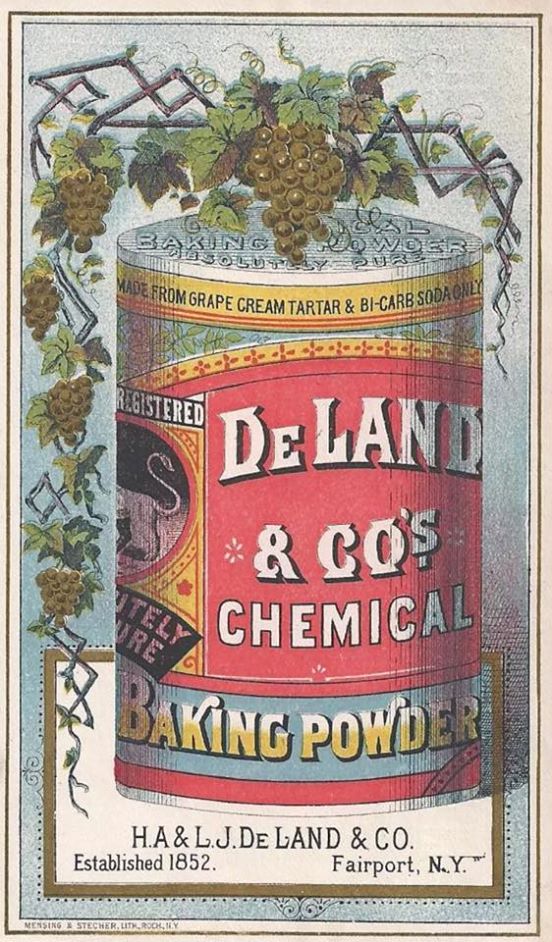Vinegar isn't something I normally put in cakes but living in Norfolk I really wanted to try Norfolk Vinegar cake. Vinegar cakes were traditionally made when eggs were in short supply such as during the first world war. They also keep well so were often sent to soldiers fighting in the trenches.
As well as the unusual addition of vinegar in Norfolk Vinegar cake it has an unusual ommission - eggs. In most cakes eggs are essential for enabling the cake to rise. Once you get rid of the shell, eggs comprise a protein rich white and a fat rich yolk. Normally when you mix fats (like oil) with water the fat forms a layer on top of the water. Eggs contain a specific type of molecule called lipoprotein which enable the fats in cakes to mix with the watery elements like the milk. When we make cakes we try and beat in a lot of air, whether that is during the creaming of sugar and butter or the addition of beaten egg white. The structure of the pre-cooked cake mix is basically foam of very small bubbles. As you cream together the butter and sugar the butter traps air on the surface of the sugar crystals. The egg then helps these air bubbles retain their structure and mix in with the watery liquids. When the cake is cooked the fat melts and the trapped air expands. The egg protein combined with the flour stops the air completely escaping and the cake rises.
 |
| "Chemical Baking Powder" by Unknown - Collection of Lynn Purvis. Licensed under Public Domain via Commons - https://commons.wikimedia.org/wiki/File:Chemical_Baking_Powder.jpg#/media/File:Chemical_Baking_Powder.jpg |
Until the the invention of baking powder eggs were the only thing that made cakes rise. The active ingredients in baking powder are a mix of bicarbonate of soda and cream of tartar. Cream of Tartar is an acid - potassium hydrogen tartarate (
KC4H5O6). Bicarbonate of Soda is an alkali - Sodium Hydrogen Carbonate (NaHCO
3). When these two chemicals are mixed in a liquid there is a chemical reaction which produces carbon dioxide gas amongst other things (NaHCO
3 + KHC
4H
4O
6 → KNaC
4H
4O
6 + H
2O + CO
2). The carbon dioxide gas gets trapped in the cake mixture and as the cake is cooked the gas expands, making the cake rise.
Norfolk Vinegar cake rises using the same principle as baking powder. The acidic vinegar in the cake replaces the acidic cream of tartar in baking powder and reacts with the bicarbonate of soda that is also in the ingredient list to produce the carbon dioxide that makes the cake rise.
 |
| Felt a bit odd adding vinegar to cake mix |
 |
| Frothing of Vinegar + Bicarb=Carbon Dioxide |
Mr Vitty was rather skeptical about the use of vinegar in cake, but the resulting cake was quite nice. The texture of the cake mix was less runny than a normal cake mix and the final result was a cake with a texture similar to that of a rock cake. It was also quite sweet - perhaps in an attempt to mask any residual vinegar taste. If I make it again I think I'll add some grated apple to moisten it a little and some cinnamon, nutmeg or all spice to give it a bit of a more interesting flavour. This could also be easily adapted to a dairy free vegan cake by replacing the
milk with soy or almond milk and substituting the butter for a dairy
free alternative. Theoretically I guess you could substitute the vinegar for anything acidic - orange juice perhaps? It's good for when you get that cake craving but
can be bothered to go out and get eggs.
Ingredients:
225g Butter
450g Self Raising Flour
225g Caster Sugar
450g Dried Fruit
180ml Milk + 1 Tablespoon
2 Tablespoons Cider Vinegar
1 Teaspoon Bicarbonate of Soda
Method:
Rub the butter into the flour until it resembles breadcrumbs and then mix in the sugar and dried fruit. In a large jug mix together 180ml of milk and the vinegar. Mix the bicarbonate of soda with the remaining tablespoon of milk and add to the milk/vinegar mixture. Mix the foaming milk into the dry ingredients and quickly place in a 23cm round baking tin. Cook at 180 C for 30 minutes and then turn down the oven to 160 C continuing to cook for about an hour or until a knife placed into the cake comes out clean.
















